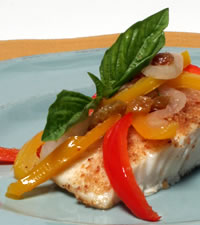Fast food can add a lot of calories, fat and sodium to your diet, if you choose carelessly. But now, a growing number of restaurants specialize in what can be called "fast food for adults." These restaurants, dubbed "fast casual," like Schlotzsky's Deli, Baja Fresh, Panera and Au Bon Pain, offer the convenience of fast food for those who want take-out, as well as a comfortable eat-in section. Originally, these restaurants targeted aging baby boomers with more money and an interest in healthy food. But studies show that almost 40 percent of the customers are aged 18 to 34.
The food offered at these places includes salads, soups and a variety of sandwiches. Since the food isn't deep-fried, you might assume that any of the menu items are a good choice for losing weight, limiting fat or reducing sodium intake. While it is true that healthier choices are more plentiful at "fast casual" restaurants compared to traditional fast food establishments, calories, fat and sodium can still add up quickly, unless you're savvy.
Many of these restaurants highlight fresh-baked breads, bagels and muffins to project an upscale healthy image. But neither the words �fresh� nor �multigrain� nor foreign bakery names denote whole grain products, which are more nutritious. Generally, most breads and bakery products are refined grain items, just like at regular fast food restaurants.
Sandwiches are often available in half or full sizes. The half-size option offers an excellent way to control calories, since many of the full-size versions contain 600-900 calories. For that amount of calories, you could have a Big Mac and some fries. If half of a sandwich is not enough for you, add a half-salad or a cup of soup to keep a better nutritional balance in your meal and control calories. If you have a sandwich, turn down the offer of chips or extra bread on the side to avoid needless calories.
The variety of salads at fast casual restaurants can be a great way to get more vegetables in your diet. The salads that contain chicken, cheese or seafood can even make a complete meal. However, if you choose a salad to accompany a chunk of bread, sandwich or soup, caution is needed for calorie control. Full-size salads often come with a quarter cup of dressing, which adds 150 to 300 calories. Thus, it's smart to choose a reduced-fat dressing or ask for dressing on the side, so you can limit the amount.
Fast casual restaurants usually serve a variety of soups that can provide the equivalent of one or two vegetable servings. The soups with beans have enough protein to serve as a main dish. Because tomato-based soups, even with beans, contain only about 100 to 120 calories, they can turn a salad or half of a sandwich into a satisfying meal. But soups with cheese, cream, sausage, potatoes or rice can tally at least 200 to 300 calories. For most people, these soups alone are not enough for a complete meal. But with a substantial sandwich or salad, they can bring too many calories, unless you eat only what you need.
Through smart eating, you can have delicious and balanced meals at fast casual restaurants that keep calories and fat in check. Limiting excessive sodium, however, is a much tougher task. Fast casual or traditional fast food should be all right, if you seldom eat out and don't have the type of medical problem that makes sodium control a daily priority. But salads can have 500 to 1,000 milligrams (mg) of sodium and soups 800 to 1,000 mg. That's almost a quarter to one-half of the recommended limit for a whole day. You could possibly even get a whole day's worth of sodium in one full-size sandwich: The amount of sodium ranges from 1,000 to 2,500 mg. To restrict sodium, try a vinegar and oil dressing on your salad to cut 100 to 1,000 mg. You could also order a half-sandwich without cheese. Bypass soups, unless you check their nutrition information first to identify the best choices.
AICR












